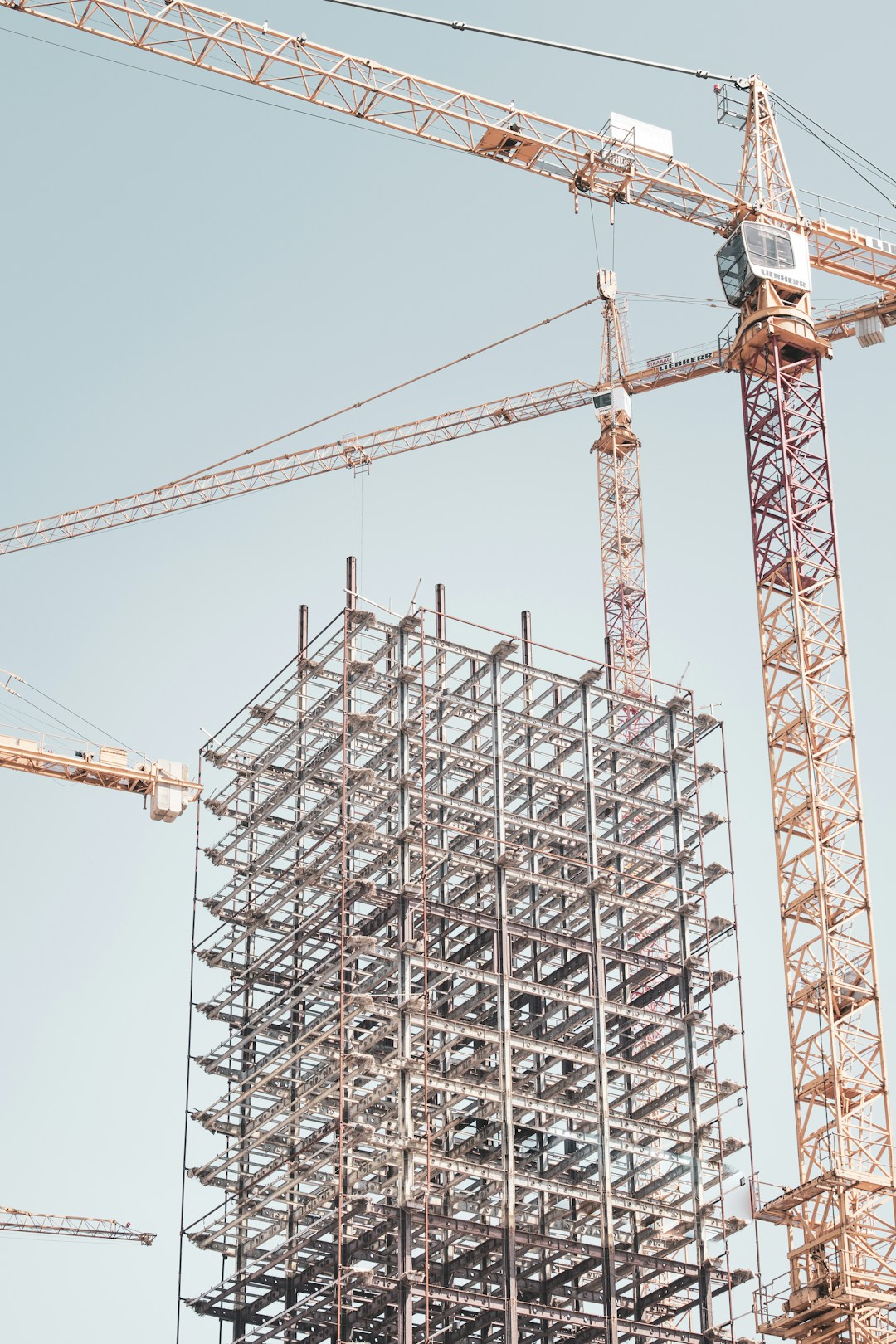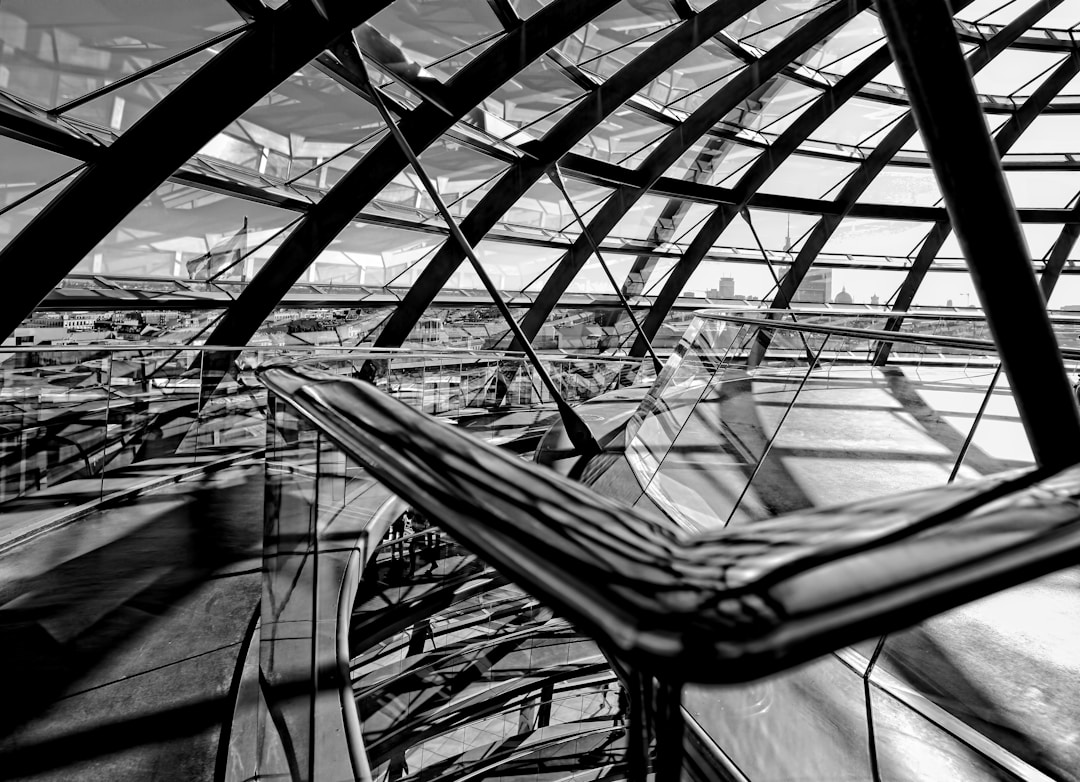The Evolution of the Global Steel Landscape: How to Establish a New Model for International Steel Trade?
2025-06-18
Currently, factors such as the slowdown in global economic growth, the rise of trade protectionism, the intensification of geopolitical conflicts, and fluctuations in raw material prices have brought many challenges to the overseas development of the steel industry. On May 16, at the 2024 (3rd) China Steel Overseas Development Conference held in Hangzhou, Zhejiang, leaders and experts attending the conference carried out in-depth exchanges on topics such as the international development of steel enterprises and the pattern of international trade, and jointly discussed the development prospects of the steel industry going global.
The attending guests proposed that the global steel industry landscape has undergone new changes in recent times. First, the export supply of steel from Russia and Ukraine has decreased, and the low-price supply markets are only Southeast Asia and the Chinese market, and the steel logistics landscape in the Middle East and European regions has changed. Second, India's domestic demand has grown rapidly, completing the transformation from a net exporter of steel to a net importer. Third, the price (price driving) in traditional high-price regions such as the European and American markets has weakened, especially in the European market, which is characterized by insufficient demand, weak replenishment efforts, and a short duration.

In this situation, steel enterprises and traders face both challenges and opportunities in import and export, and should make decisions prudently in response to the times, and actively explore new international trade models for steel that are suitable for the new supply and demand environment.
Internationalization is crucial for China's steel industry. It can be said that since the reform and opening up, internationalization has been accompanied by the entire process of the sustained and rapid development of China's steel industry. Xia Nong, Vice President of the Steel Association, pointed out that the steel industry has always been based on the domestic market to develop and grow, paid attention to international exchanges and cooperation, and continuously improved the quality of steel exports and optimized the structure of steel exports.
Statistics from the Steel Association show that the proportion of domestic apparent crude steel consumption to domestic crude steel output has long remained above 90%, with an average of 93% in the past ten years. From 2016 to 2022, the average export price of steel in China increased by 2 times, and the price difference between domestic and foreign markets increased by 10 times.
In the process of internationalization, 2013 is an important node. Since the proposal of the "Belt and Road" initiative, the international trade of steel in China has ushered in great opportunities. The export volume of steel in China has continued to increase, reaching the highest level since 2017 in 2023, and the proportion of exports to countries along the "Belt and Road" has also been increasing year by year.
"According to incomplete statistics, in 2013, China's total steel exports to countries along the 'Belt and Road' were about 11.5677 million tons, accounting for 20.45% of China's total steel exports. By 2023, the total steel exports from China to countries along the 'Belt and Road' were about 69.609 million tons, accounting for 77.12% of China's total steel exports." Li Tiange, an overseas analyst at Shanghai Steel Union, said that from the perspective of regional structure, the composition of China's main steel export markets in 2023 was relatively stable, with slight changes in rankings. Among them, Vietnam replaced South Korea as China's largest export destination market, and nine of the top ten destination markets were "Belt and Road" countries, continuing to maintain their status as China's main export markets.
It is worth mentioning that in recent years, China's export volume to non-traditional destination markets such as the Middle East has increased significantly. Taking Turkey as an example, in 2022, China's steel export volume to Turkey was 2.4494 million tons, a year-on-year increase of 35.49%; in 2023, the export volume continued to maintain a high growth trend, increasing by 63.5% year-on-year to 4.0056 million tons.
When talking about China's high export volume, the attending guests believed that the high share of China's crude steel output in the world is the basic condition for the growth of export volume, and at the same time, the downward domestic demand provides a huge driving force for steel exports. Li Tiange said: "There is another important reason, that is, China's resource price advantage is obvious. Taking hot-rolled coils as an example, the export price of China's hot-rolled coils in 2023 was 65-70 US dollars/ton lower than that of India and the Black Sea region." However, Xia Nong pointed out, "In 2023, mainly due to international market and other reasons, the export price decreased, but it was still higher than the domestic average price."
According to statistics from the World Steel Association, affected by global monetary tightening policies, geopolitical conflicts, etc., global crude steel consumption fell by 19.2 million tons in 2023, and the decline in Europe was particularly obvious. Correspondingly, the volume of international import and export trade also decreased overall. Ren Zhuqian, Vice President of Shanghai Steel Union E-Commerce Co., Ltd., analyzed that in terms of China's steel exports in 2023, West Asia led the increase with 61.8%; North America showed a negative growth of -17%.
At the same time, in recent years, driven by the trend of low-carbon transformation, international trade has shown new trends. That is, the proportion of international trade volume of pig iron as an intermediate product in output is extremely low, while the proportion of direct reduced iron (DRI) used in international trade is increasing year by year. "It reached 9.4% in 2023, and is expected to further increase in the future." Zhong Shaoliang, Deputy Director-General of the World Steel Association and Chief Representative of the Beijing Office, said, "Low-carbon is reshaping the development pattern of the global steel industry, including international trade."
Steel exports face short-term and long-term challenges
At present, the steel industry is in a complex and changeable international environment, and the overseas development of steel enterprises is also accompanied by many uncertain factors, such as geopolitical policy barriers, global carbon tariffs, and export policies. The attending guests analyzed the current challenges from two aspects: short-term factors and long-term factors.
In the short term, frequent trade friction may become the main challenge for exports in 2024. The information release meeting of the first quarter of the Steel Association revealed that in 2023, China suffered 4 original trade remedy investigations, and in the first quarter of this year, 5 original trade remedy investigations have been received, and the number of cases initiated by emerging markets and developing economies is on the rise. The variety structure has become a factor that "ignites" trade friction.
According to statistics from Shanghai Steel Union, in 2023, the export volume of various steel products in China increased year-on-year, and the export increase was mainly contributed by hot-rolled coils, with an export volume of up to 21.5198 million tons, a year-on-year increase of 86.1%. The export volume of bars and wires was 10.8818 million tons, a year-on-year increase of 42.1%, of which 30% was rebar, and the export volume increased by 145.7% year-on-year. The export of semi-finished products also performed well, with the export volume of billets reaching 3.2792 million tons, a year-on-year increase of 219.2%. In Ren Zhuqian's view, the current growth in billet exports is actually affected by the international situation. "With the strengthening of sanctions by the UK and the EU against Russia, Russia's billet exports are severely restricted, indirectly promoting the billet exports of China and Asian regions." She analyzed.
Ren Zhuqian also pointed out that the capacity landing in ASEAN has actually been relatively slow in the past two years, but in 2023-2024, the planned production capacity will increase to about 25 million tons. These capacities are still mainly long (long products) produced by blast furnace processes, which may further consolidate the export of semi-finished products and long products in the region.
In the long run, the EU's proposed Carbon Border Adjustment Mechanism (CBAM) will significantly抑制 (suppress) international steel trade activities.
In 2026, the EU will start to formally levy carbon tariffs and gradually reduce free carbon quotas. "According to the preliminary estimate of the current CBAM rules, the export cost of China's steel industry will increase by 4%-6%, and the annual CBAM certificate fee involved will be 200-400 million US dollars. After the free carbon quota is completely (cancelled) in 2034, the export cost of China to the EU will increase by about 49%." Ren Zhuqian calculated a cost account.
Coincidentally, countries such as the UK, the United States, Canada, and Australia are also planning to launch their own "CBAM", and the WTO also plans to include carbon footprints in the international trade of steel products. "At that time, the gap in global steel production costs will gradually narrow, leading to a significant slowdown in global steel trade activities. China's comprehensive costs are at the global low level, and it is expected that steel exports will be most affected." Ren Zhuqian analyzed and believed that at present, CBAM has the greatest impact on China's plate exports.
The trade volume data statistics of Shanghai Steel Union show that with the gradual (fading) of the impact of the epidemic, the total steel export volume from China to the EU has remained stable in the past 3 years. In 2023, China exported about 3.8868 million tons of steel to the EU, accounting for 4% of the total export volume. Among them, from January to November 2023, the steel import volume of the EU was 25.9 million tons, a year-on-year decrease of 12.3%. Among them, the import volume of long decreased by 23.4% year-on-year to 6.52 million tons, and the import volume of plates decreased by 7.8% year-on-year to 19.38 million tons.
In the current situation, we should not only actively respond to challenges but also seize development opportunities. In terms of the big environment, the Organization for Economic Cooperation and Development (OECD) released the latest forecast in May 2024, raising the global economic growth forecast for 2024 from 2.9% to 3.1%, and raising the economic growth forecast for 2025 from 3% to 3.2%. At the same time, according to the forecast of the World Steel Association in April 2024, global steel demand will improve in 2024, increasing by 1.7% year-on-year. The steel demand in Turkey, India, Russia, and Germany is expected to grow by 3.2%-8.2% in 2024. The entry into force of the Regional Comprehensive Economic Partnership (RCEP) will also play a certain role in promoting steel exports to the ASEAN region.
At the specific country level, from the perspectives of GDP (total), net steel import volume, per capita apparent consumption, etc., 27 countries such as Thailand and Indonesia have strong steel consumption potential. "Countries with a per capita crude steel consumption of 100-400 kg are in the stage of rapid industrialization and have the greatest steel consumption potential." Li Tiange listed them one by one, and these countries are Saudi Arabia, Portugal, Thailand, Vietnam, Malaysia, Vietnam, Iran, New Zealand, Greece, Kazakhstan, Chile, Argentina, Peru, and Egypt. In addition, under the drive of high-quality construction of the "Belt and Road" for China's foreign contracting engineering industry (mainly concentrated in the field of large-scale infrastructure), it will help the export of construction steel.
"Adhere to doing difficult but correct things"
In the current context, how does China's steel industry maintain its internationalization determination, how to better contribute Chinese strength in the world steel industry, and explore production and trade models that are suitable for the new supply and demand environment are important issues we face.
"The current environment requires us to adhere to doing difficult but correct things." The attending guests put forward suggestions for dealing with the current international trade situation from several aspects.
First, actively build an overseas steel supply chain and allocate resources on a global scale. At present, the challenges of domestic demand are driving the further enhancement of the motivation for steel exports, and many steel enterprises have set higher export targets. Gao Bo, Co-Chairman of Shanghai Steel Union, pointed out that in addition to seizing the trade opportunities of product exports, steel enterprises going overseas should also actively enhance their overseas supply chain capabilities, seek production factors with lower costs, and improve their global resource allocation capabilities.
Regarding how to better build an overseas steel supply chain, Zhang Dongdong, Deputy General Manager of the Production and Investment Center of Hangzhou Thermal Union Group Co., Ltd., believes that efforts should be made in 3 aspects. First, the business coverage area should be expanded. Look for competitive low-price supply resources (Southeast Asia, Chinese coastal steel mills, etc.), and develop high-price or incremental markets (the United States, India market, etc.). Second, on the basis of focusing on traditional business varieties, go further in product depth and expand businesses such as tinplate, stainless steel, home appliance plates, container plates, wear-resistant and weather-resistant plates, and ship plates. Third, the profits of overseas conventional channels may be compressed, and services should be broadened to increase the profits of futures and spot.
Second, earnestly deal with new environmental barriers such as CBAM and actively participate in global governance. Xia Nong pointed out that in the future, we should actively promote the mutual recognition and acceptance of low-carbon steel standards in various countries. "Under the principle and framework of the World Trade Organization's unified steel standards, the Steel Association will promote the mutual recognition and acceptance of the EPD platform and low-carbon steel standards to promote global fair trade." Xia Nong said.
Zhong Shaoliang suggested that we should seize the "only report" stage of the transition period, establish a sound greenhouse gas management system, and complete the inventory of carbon emission data; actively, truthfully, and appropriately declare; analyze, evaluate, and optimize the process flow, and evaluate the existing emission reduction opportunities in the organization and value chain; enterprises not yet covered by CBAM should carry out quantitative analysis of their own carbon emissions in advance to find out their own carbon assets; formulate corresponding carbon reduction strategies, carry out research on low-carbon products, and make preparations for the expansion of the product scope covered by the EU CBAM and the CBAM of other countries; actively participate in the national carbon emission trading market to be included; strengthen talent training and system construction. In addition, in the long run, Chinese steel enterprises should also increase investment in innovation and R&D, take the initiative to actively integrate into international organizations, and participate in industry governance, etc.
Third, follow up the dynamics of national import and export policies and enhance international competitiveness. On December 21, 2023, the State Council Tariff Commission announced adjustments to the tariff subheadings of some steel products, further clarifying the trend of refining the classification of China's "special steel varieties", which will help realize the classified implementation of steel exports and is conducive to guiding Chinese steel enterprises to optimize their product structure and promote transformation, upgrading, and high-quality development. Steel enterprises and trade enterprises should timely track the dynamics of national import and export policies, adjust their own export product structure, and strive to enhance the international market competitiveness of China's high-end steel.
Some experts suggest that the varieties of steel exported by China should pay attention to forming differences with the local market varieties to help the local economic development. At the same time, steel enterprises and trading companies should also find their own positioning and characteristics in the global steel industry chain, put an end to disorderly competition, and standardize export behaviors.
Fourth, scientifically predict international market demand and orderly promote international trade. Ren Zhuqian believes that with the EU's announcement in 2023 to continue to "prohibit" finished steel from Russia, and the tight local supply and reduced exports in Turkey, it may further promote China's direct exports of finished steel to Europe. When overseas demand is still acceptable, China's billet exports still have a certain upward space in the future.
Li Tiange said that Chinese steel enterprises should firmly grasp the opportunity of high-quality construction of the "Belt and Road", scientifically predict international market demand, and at the same time be alert to risks related to trade friction. In the context of the Federal Reserve's high-interest rate policy and the日益紧张 (increasingly tense) geopolitical situation, it is expected that the steel demand in the ASEAN region (especially Vietnam, China's largest export destination market) will only maintain restorative growth in 2024; after the steel demand in emerging markets such as North Africa slowed down significantly in 2022-2023, it is expected to accelerate growth this year, bringing certain opportunities for China's steel exports. At the same time, although China's export volume to the non-traditional destination market of the Middle East has increased significantly in recent years, it may face uncertainties in 2024, and relevant steel enterprises should be prepared for this.
RELATED BLOG







